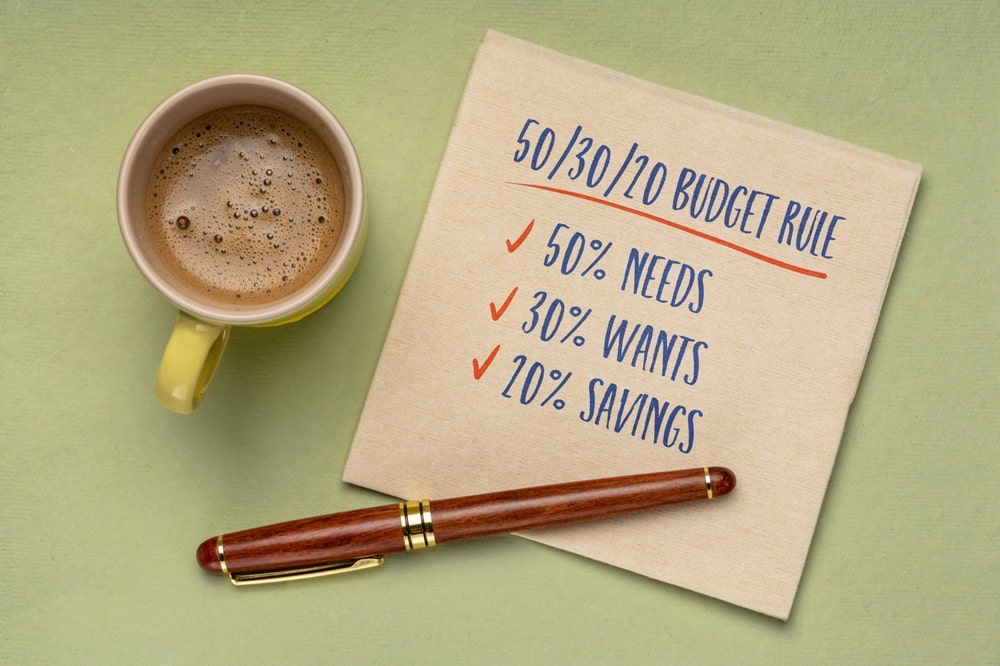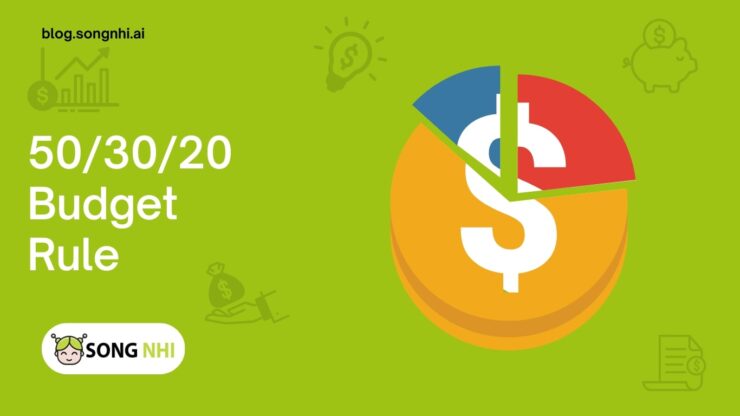Budget rule (the 50/30/20) has gained popularity as a simple yet effective method for managing finances in the realm of personal finance. In this article, we’ll delve into the intricacies of this budgeting approach, providing a detailed breakdown and practical tips for adoption.
Understanding the 50/30/20 Budget Rule
The 50/30/20 budget rule, popularized by Senator Elizabeth Warren in her book “All Your Worth: The Ultimate Lifetime Money Plan,” allocates your after-tax income into three categories: needs, wants, and savings.
50% – Needs
This category encompasses essential expenses such as housing, utilities, groceries, transportation, and healthcare. To adopt the 50/30/20 budget rule, start by listing all your fixed and variable needs. Calculate your total monthly income and allocate no more than 50% towards covering these necessities.

Rent/Mortgage and Utilities (Example)
For instance, if your monthly income is $4,000, you should aim to spend no more than $2,000 on rent or mortgage payments, utilities, and other essential bills combined.
30% – Wants
Wants include discretionary spending on non-essential items like dining out, entertainment, travel, and luxury purchases. Limit your spending in this category to 30% of your income. Prioritize your wants based on your values and preferences, ensuring you allocate funds wisely to derive maximum enjoyment.
Dining Out and Entertainment (Example)
With a monthly income of $4,000, you can allocate $1,200 towards dining out, movie nights, concerts, hobbies, and other leisure activities that bring you joy and fulfillment.
20% – Savings
Savings are paramount for financial security and future goals. This category includes contributions to retirement accounts, emergency funds, debt repayment, and long-term investments. Allocate a minimum of 20% of your income towards savings, with the aim of building wealth and achieving financial freedom over time.

Emergency Fund and Retirement Savings (Example)
For instance, if you earn $4,000 per month, you should aim to save $800 towards building an emergency fund, funding your retirement accounts, or paying off high-interest debts.
Benefits of the 50/30/20 Budget Rule
- Provides a clear framework for budgeting, ensuring a balanced approach to managing finances.
- Helps prioritize spending based on needs, wants, and long-term financial goals.
- Promotes financial discipline and awareness, leading to better money management habits.
- Facilitates savings accumulation, enabling individuals to build a safety net and invest for the future.
How to Adopt the 50/30/20 Budget Rule
Individuals vary in their approach to budgeting, and there’s no one-size-fits-all method. Nevertheless, here are some universal guidelines for embracing a 50/30/20 budget that can benefit everyone.
Assess Your Current Financial Situation
Begin by evaluating your income, expenses, debts, and savings goals. Understand where your money is going and identify areas for improvement.
Create a Budget
Utilize budgeting tools or spreadsheets to allocate your income into the 50/30/20 categories. Track your expenses diligently and adjust as needed to stay within the designated percentages.
Prioritize Your Needs
Ensure essential expenses are covered first, focusing on housing, utilities, food, and healthcare. Trim unnecessary costs and explore ways to reduce fixed expenses where possible.
Allocate Your Wants Wisely
Exercise discretion when indulging in discretionary spending. Prioritize experiences and purchases that align with your values and bring you joy, while being mindful of your budget limits.
Automate Savings and Investments
Set up automatic transfers to savings accounts, retirement plans, and investment accounts. This ensures consistent contributions and helps you stay on track towards achieving your financial goals.
Review and Adjust Regularly
Periodically review your budget and spending patterns to identify areas for optimization. Adjust your allocations as your financial circumstances evolve and priorities change.
Related articles:
- Practical Strategies for Financial Success
- Embark on a Money Saving Challenge
- How to Start Saving Money
- Top Money Saving Tips: Practical Strategies
- Effective Strategies for Rapid Savings
FAQs about the 50/30/20 Budget Rule
While the 50/30/20 rule serves as a solid budgeting framework for many, it may not align perfectly with your individual monthly expenses. Factors such as income level and location can influence the effectiveness of allocating 50% of your income to necessities. Some of popular questions about the 50-30-20 budget rule:
Can I modify the percentages in the 50/30/20 rule to fit my circumstances?
While the 50/30/20 rule provides a general guideline, it’s essential to adapt it to your individual financial situation. If your needs or savings goals require adjustments to the percentages, feel free to modify them accordingly. The key is to maintain a balance that supports your financial well-being and goals.
What if my expenses exceed 50% for needs or 30% for wants?
If your expenses surpass the recommended percentages, it may indicate a need to reassess your budget and spending habits. Look for opportunities to reduce costs in discretionary areas or explore ways to increase your income. Remember, the goal is to strive for balance and financial stability over time.
How can I track my expenses effectively to ensure I stay within the budget?
Utilize budgeting apps, spreadsheets, or financial software to track your expenses systematically. Categorize your spending and review your budget regularly to identify any deviations. Adjust your allocations as needed to align with your financial goals and priorities. Consistent monitoring and adjustment are key to successful budget management.
Is the 50/30/20 rule suitable for everyone, regardless of income level or financial goals?
While the 50/30/20 rule provides a useful framework for budgeting, it may not be suitable for everyone. Individuals with high debt obligations or irregular income may need to modify the percentages to accommodate their circumstances. Similarly, those with ambitious savings goals or unique financial objectives may require a more customized approach. Ultimately, the goal is to find a budgeting method that aligns with your needs, values, and aspirations.
Conclusion
In conclusion, the 50/30/20 budget rule offers a straightforward yet effective approach to managing finances and achieving financial goals. By prioritizing needs, wants, and savings, individuals can attain a balanced and sustainable budget that fosters financial stability and prosperity. Whether you’re striving to pay off debt, build an emergency fund, or invest for the future, adopting the principles of the 50/30/20 rule can pave the way towards a brighter financial future.

















